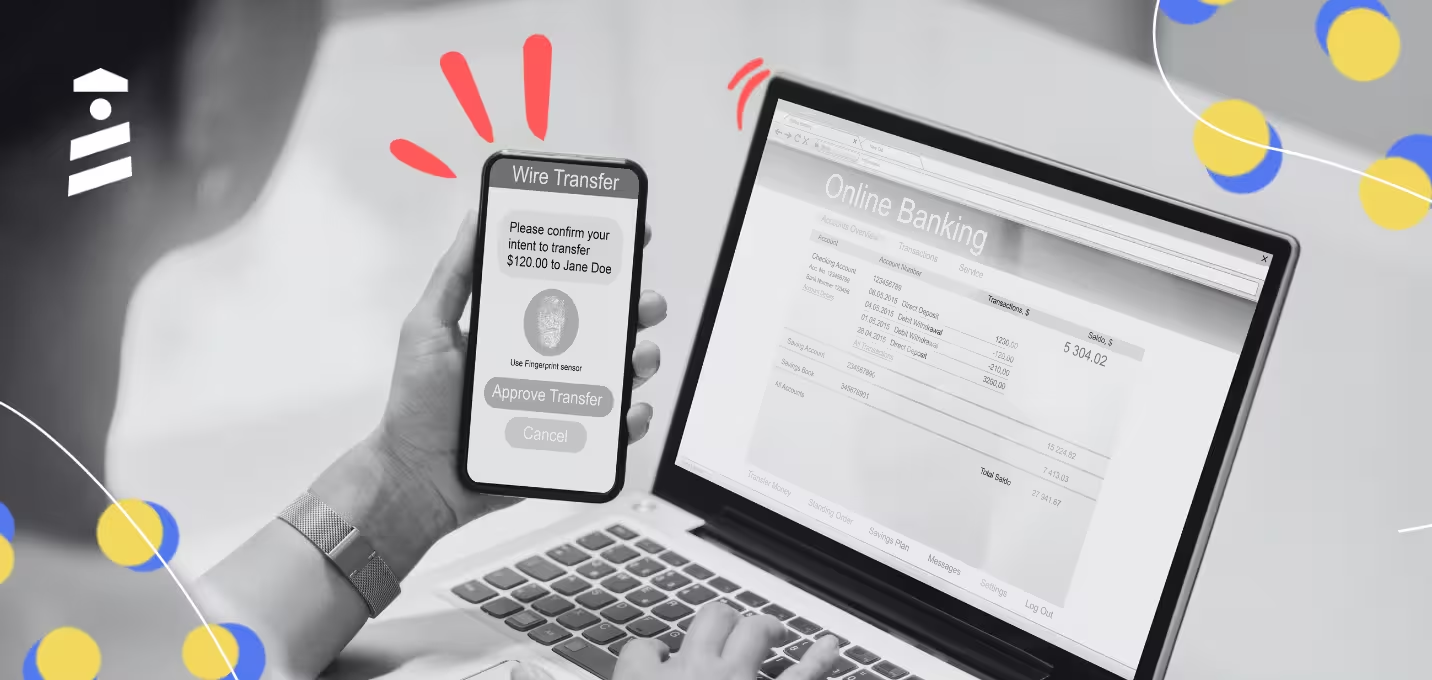

Imagine Sarah, a marketing manager at a mid-sized tech company, drowning in a sea of software options, each promising to revolutionize her workflow.
Frustrated and overwhelmed, she schedules yet another demo, bracing herself for another hour of dry, feature-heavy presentations. 🥺
But this time, something changes. The demo she attends isn't just a monotonous walkthrough of features—it's a compelling story that
- addresses her specific pain points,
- demonstrates clear benefits, and
- engages her from start to finish.
By the end, Sarah isn't just interested; she's ready to buy.
This transformation isn't a rare phenomenon. In fact, companies using product demos see a 30% higher conversion rate on average than those that don't.
🛎️ When crafted effectively, demos are not just product showcases; they are persuasive tools designed to address specific customer needs, build trust, and ultimately influence buying decisions.
In this guide, we'll explore how to prepare, present, and perfect your SaaS demos to turn leads like Sarah into loyal customers effectively.
But first, let's see a quick summary.
TL;DR
- Research Audience: Understand pain points to tailor your narrative.
- Tailored Focus: Highlight specific needs, not all features.
- Emotional Connection: Use storytelling techniques.
- Interactive Engagement: Include interactive elements.
- Define Unique Value: Clearly state your product's unique benefits.
- Problem-Solving Examples: Use real-world scenarios to demonstrate solutions.
- Evidence-Based: Provide data and case studies to support claims.
- Follow-Up Options: Offer surveys, feedback forms, trials, or quotes.
- Reiterate Benefits: Emphasize key product benefits in closing.
- Post-Demo Analysis: Gather feedback, analyze data, refine strategy, and A/B test.
So, it's time for deep dive.
Preparation: Understanding Needs and Goals
To create a successful demo, it’s crucial to understand the psychology behind it.
Here’s how you can get started:
1- Research the Industry Challenges and Pain Points
Before you even start building your demo, invest significant time in researching the industry and identifying the common challenges and pain points your potential customers face.
💡This can be done through various methods such as
- reading industry reports,
- analyzing market trends,
- engaging in forums, and
- conducting surveys or interviews with your target audience.
Understanding these challenges will allow you to tailor your demo to address these specific issues, making it more relevant and impactful.
By highlighting how your product directly alleviates these pain points, you can create a stronger connection with your audience and demonstrate that you truly understand their needs.
2- Craft a Demo Narrative that Addresses Their Specific Needs
Avoid the temptation to cram every feature into one demo.
Instead, focus on creating a narrative that addresses the specific needs of your audience.
Start by identifying the most pressing issues your potential customers face and then build a storyline around how your product solves these problems.
Use relatable scenarios and examples that mirror the real-world situations your prospects encounter.
This approach ensures that your demo remains focused and engaging, highlighting the most relevant aspects of your product.
By crafting a cohesive and targeted narrative, you can keep your audience's attention and clearly illustrate the value your product brings to their specific context.
3- Use Storytelling Techniques to Connect Emotionally
People connect with stories.
Use storytelling techniques to frame your demo in a way that resonates emotionally with your audience.
Start by understanding their journey -
- what challenges they face,
- what goals they strive to achieve, and
- what emotions are tied to these experiences.
Craft a compelling narrative that positions your product as the hero of their story, illustrating how it can transform their business and solve their problems effectively.
Use real-life success stories, customer testimonials, and vivid scenarios to make your points more relatable and impactful.
🎯 By weaving these elements into your demo, you not only demonstrate the practical benefits of your product but also create an emotional connection that can significantly influence your audience's decision-making process.
Engage their imagination, appeal to their aspirations, and show them a vision of success with your product at the center.
4- Make It Interactive and Engaging
Engagement is key to a successful demo.
Incorporate interactive elements like product tours, hotspots, and tooltips to keep your audience involved.
These features not only make the demo more dynamic but also allow prospects to explore aspects of the product that interest them the most.
Value Proposition: Shifting From Features to Benefits
To truly resonate with your audience, shift the focus from features to benefits.
1- Find and Describe Your Value Proposition
Clearly articulate your value proposition.
Start by defining what makes your product unique in the marketplace - whether it is an innovative feature, superior performance, cost-effectiveness, or exceptional customer support.
Explain how these unique attributes translate into tangible benefits for the customer, such as increased efficiency, cost savings, or enhanced user experience.
This forms the foundation of your demo narrative, guiding the audience to understand why your product stands out and why they should choose it over competitors.
By succinctly conveying your value proposition, you set the stage for a demo that is both persuasive and memorable.
2- Showcase How Your Product Solves Problems
Demonstrate how your product addresses specific challenges and pain points.
Begin by identifying the key issues your prospects face and then show, step-by-step, how your product effectively resolves these problems.
Use real-world examples, case studies, and customer testimonials to illustrate its effectiveness.
Highlight success stories where your product has made a significant impact, showcasing metrics such as time saved, revenue increased, or product boosted.
By providing concrete evidence and relatable scenarios, you can convincingly show your audience that your product is not just a theoretical solution but a proven tool that delivers real, measurable results.
3- Use Data, Case Studies, and Quantifiable Benefits
Support your claims with data, case studies, and quantifiable benefits.
This adds credibility to your demo and helps prospects see the tangible value your product offers.
Closing: Finding a Call to Action
A strong closing is essential to converting leads into customers.
1- Offer Follow-Up Options Aligned with the Needs
Provide follow-up options that align with the needs of your prospects, such as Net Promoter Score (NPS) surveys or detailed feedback forms.
This keeps the conversation going and shows that you value their input.
2- Provide Free Trials and/or Personalized Quotes
Encourage prospects to take the next step by offering free trials or personalized quotes.
This allows them to experience your product firsthand and see its value in action.
3- Give Access to Additional Resources
Ensure that prospects have access to additional resources, such as your knowledge base or resource center.
This keeps them engaged with your product and helps them find answers to any questions they might have.
4- Remind the Value Proposition
Reiterate your value proposition as you close the demo.
Consider using announcement modals to reinforce key points and keep your product's benefits top of mind.
Life After Demo: Analyzing and Refining Your Demos
The work doesn’t end once the demo is over.
Continuous improvement is crucial.
1- Gather Feedback from Prospects
Collecting feedback is essential to understand how your demo resonates with prospects.
With UserGuiding's advanced survey feature, you can effortlessly create customized surveys that are seamlessly integrated into your product experience.

These surveys allow you to capture detailed insights and opinions, providing you with the data you need to refine and enhance your demos.

UserGuiding’s user-friendly interface ensures that you gather meaningful feedback without disrupting the user experience.
So. Will you be trying out our newest feature and see what it can do for you?
2- Analyze Data to Identify Areas for Improvement
UserGuiding’s powerful analytics tools give you a comprehensive view of how prospects interact with your demos.
You can track user engagement, identify which parts of your demo are most effective, and spot areas that may need improvement.

Our platform's analytics offer in-depth insights, allowing you to make data-driven decisions to optimize your demo strategy.
The detailed reports and visualizations help you understand user behavior, ensuring you can continually refine your approach for better results.
3- Refine Your Demo Strategy and Messaging
Based on the valuable feedback and detailed analytics provided, continuously refine your demo strategy and messaging.
Tailoring your approach ensures that your demos remain relevant, engaging, and compelling, driving higher conversion rates and customer satisfaction.
4- Try A/B Testing Different Demo Elements to Optimize Results
A/B testing is a powerful method to fine-tune your demos.
By creating variations of your demo and presenting them to different segments of your audience, you can determine which elements resonate best.
Test various aspects, such as the order of content, types of interactive features, and storytelling approaches.
Analyze the results to see which version performs better in terms of engagement and conversion rates.
This iterative process allows you to continually optimize your demos for maximum impact and effectiveness.
Key Takeaways
To create effective SaaS demos, begin by thoroughly researching your audience’s industry to understand their challenges and pain points.
Use this knowledge to craft a demo narrative that is focused on their specific needs, ensuring it is both relevant and engaging.
Incorporate storytelling techniques to make your demo emotionally resonant, illustrating how your product can transform their business and solve their problems.
Clearly define and articulate your value proposition, highlighting what makes your product unique and the specific benefits it offers.
Demonstrate your product’s effectiveness with real-world examples and customer testimonials.
Use data and case studies to support your claims, making your demo more persuasive.
Close your demo with a strong call to action.
Offer follow-up options, free trials, or personalized quotes to encourage prospects to take the next step.
After the demo, gather feedback to understand how it resonated with prospects. Continuously refine your demo strategy and perform A/B testing to optimize results, ensuring your demos remain compelling.
That's all from me today, catch you later! 🧚🏻♂️

















.svg)
.svg)
.svg)
.svg)
.svg)

.svg)
.svg)












.svg)
.svg)




.png)

















